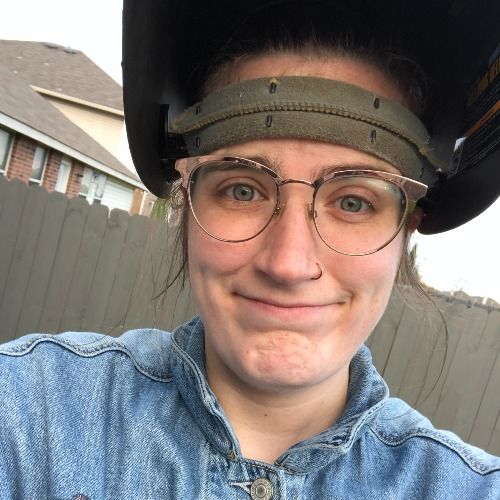Episode 4
Ansel Adams - S104
Everything you want to know about the life of Ansel Adams! We dive into his childhood when he first got his camera, the process in the art room, and his achievements. If you have no idea who we are talking about then come join us on this wonderful adventure.
Special thanks to my brother for creating the intro/outro, my last bottle of wine for the breaks.
Sources Used
Transcript
The city was only about 50 years old, and that's not really old at all, if you think about it. Now, Ansel's family was well off because his grandfather, who was a timber baron, if any of you are wondering, because I was when I read this, what the hell is a timber baron? Well, I googled it. It's basically a fancy term for running and ruling a logging empire. A logging empire? Who knew such terminology existed? Anzel and his family lived in a beautiful house that overlooked the sand dunes where you could see the Pacific Ocean. I feel like this is probably what made a big impression on Ansel, knowing what his later works are, which we will obviously get into later on in his life.
Ansel states that his earliest memory is watching the fog pass by his house that was high up on a hill, I believe. And I'm sure all the people around him as well, feel that where Ansel grew up was very much formative to the way that he would look at the world and the way that he would create his art. If you look at Ansel Adams, you might notice that he has a crooked nose. This wasn't how he was born in 19 six.
. Now, there was the Panic of:Part of this reasoning is because Ansell could not sit still and struggled to comprehend much of what was being taught. Ansel states later in his life he probably would have been labeled as hyperactive and diagnosed with Dyslexia because he was taken out of school, though he did have private tutoring. And with that Ansel could roam outside for hours letting all this pent up energy out. So his father constantly paid for tutoring, but also let him have the freedom of being out in nature. Charles knew Ansel needed extra love and time, so he did everything in his power to make sure Ansel got everything he needed to succeed. Charles tolerated this chaos that Ansel did, but he made sure to nurture him and push him with his talents. When Ansel was twelve, he sat down at the piano and taught himself how to play and read music. He absolutely loved love piano, which was crazy because he was all over the place and piano had some strict discipline to it. I also think it's amazing he just taught himself, which that's really cool. That kind of tells you how intelligent Ansel was at such a young age. His father Charles would do everything he could to help Ansel, and later he would buy him pianos even though they couldn't really afford it. His father did what he could to push Ansel's talents further.
e and more of Yosemite. So in: ,: urred, but it happened before: at he couldn't resist. And in:He realized in that moment that people were not going to get how he felt. While standing at half Dome. He visualized what he wanted people to see. So with that, he attached a red rotten filter. Pretty sure I said that wrong. What this filter does is darken the sky when you take a photo. With one shot left, he took the picture and Ansel got the photograph that he was visualizing. This photo is just breathtaking. You can really place yourself where Ansel was and realize how huge half Dome is. The contrast between the snow and the dark sky just flows so well and really gives almost this eerie but peaceful look to it. After the summer ended and fall begin, ansel's first photos would be published in San Francisco, all thanks to Albert Bender.
d soon be a published man. In:Later in his career, he took more landscapes and interactions with the landscapes more than the mountains. This was mainly because of aging and not being able to climb as often as he would like, ansel wanted to capture how the weather interacted with the landscape. He would often wait for the perfect moment to capture a storm cloud or a fall rolling into the mountain range. He would often have a high horizon line in his earlier works that would be above eye level. This gave the viewer a sense of how enormous these landscapes were. And to give a perspective of how Ansel felt to the viewer with the high horizon line, he used negative space to his advantage to give that almost eerie lonesome vibe to his photos. This would be all tied together with his intense contrast and use of light in his pictures. If you're wondering, all Ansel's photos are shot in black and white. This is done completely on purpose to give such an impactful contrast. Now, for Ansell to get the perfect shot, he would use an exposure meter to help him get the right amount of light and to figure out how much exposure time he needed for his film. He would also use filters such to get filters and such to get exactly what he wanted. Now, this would be written down so when in the dark room, he knew how long the exposure time was, and maybe if he went out on a set day again that had a cloud coverage. He could just look at what he wrote and use that for his exposure. Now for Ansel to get the perfect shot, he would use an exposure in the dark room.
Ansel would test out the exposure times of the negative to make sure the print comes out perfectly. This is where all the trial and error comes into play. This can take literally up to hours, sometimes days. In Ansel's dark room, he somehow worked magic. He had his enlarger on a railroad track. Yes, railroad track. So he could easily move the enlarger back and forth. This is also because later on in his life he started doing huge mirrors of his photographs. So he needed something that was very well movable. And then he would place the photo paper on the wall with magnets to project it so it burn into the paper. For those that don't know what an enlarger is, it's where you put your negative in and you project the image onto photo paper, like I said, causing the image to be burned, but it's not actually burnt onto the paper. There's chemistry involved, but I'm not going to get into that. This is where the most important part would take place dodge and burn his images. Dodging would mean taking cardboard and blocking light to a certain area of an image so it doesn't become too dark. And burning is the opposite, where you would want an area to become dark, but blocking off areas you want to keep lighter. Now you can find these exact terms in Photoshop if they do sound familiar, and you use Photoshop, that's because digitally it does the same thing. Just in the dark room, you are physically doing it instead of a click of a mouse.
, we're heading into the year:Alfred took Ansel's portfolio carefully looked through it not once, but twice, silently did not say a single word. He then closed his portfolio backup tied it together. He looked up and he stated these are the finest photographs he has ever seen. This is one of the greatest moments in Ansel's career as an artist and that was to be accepted by another great artist. This drove Ansel to keep going and to keep pushing himself to do better with that. He never took a day off or a vacation, really. The only time that he would take off is when he would be hungover. And he really needed a day to kind of rest and recoup. This only happened occasionally and Ansel was basically a well oiled machine. But it was very difficult to be a photographer back then. So it's understandable why he worked consistently and he worked every single day as he was truly becoming a great photographer.
ng around him at the time. In: That's because in: out if he left his family? In: ,: s beautiful treasure. Now, in:Now, this is where his style changes, though. You see that he ends up getting rid of the horizon line altogether. And he starts making his photos have this limitless space. This allows the viewer to become completely lost within the photo and helps give his murals more of this massive look. Later on in that same year, though, he was on a road trip through New Mexico and he came across the village. His son Michael recalls the car coming to a super fast stop and his dad running to set up his camera. Because this was during sunset, Anzel had to set up fast and only could take one shot before there was no light in the sky. This photograph would be called moonrise Hernandez. It's hauntingly beautiful. He captures the light casting onto the gravestone so perfectly. Once you see the gravestone, your eyes moves up to where the sky is and you see the clouds, and then you just see the moon surrounded by emptiness.
Ansel had an eye, and he just knew exactly how to capture his fate, what he wanted with a single photograph. I can just stare at this photo for a while. When describing the way photography works, ansel says this the negative is equivalent of the composer's score. The print is equivalent of the conductor's performance. Honestly couldn't agree more. Every one of Ansel's prints was a constant rebirth of an image that he took. It's why he spent hours in the dark room perfecting it, because he didn't want to just put a photo out in the world. He wanted people to feel the presence of the moment he captured. As time went by and he became older, he started to take less and less photographs. It wasn't that he couldn't take photos. It was that his drive was gone. He spent a good part of two decades capturing and creating the right moment and prints for his viewer.
Ansel would often feel guilty because he couldn't keep up with his stamina he had back in the day. His time went on. He came to meet a guy named Turnage and he ultimately turned Ansel into a multi million dollar business. This made Ansell the first fine arts photographer in the world to be marketed. What he spent years trying to do and have enough money to support his family he now made more than what he could ever think of or ever imagining just from his photos.
the environment. By the year: owing week, following year in:I'll be posting photos of some of his works I talked about in today's episode on Instagram, as well as photos of Ansel. Thank you to you, the listener. And please don't forget to subscribe so you don't miss out on an episode. And I'll be back next week. Bye. Also, I fixed my mic, so this should sound like 10 billion times better. And also I'm sorry. That this is a shorter episode. Okay. Bye.

